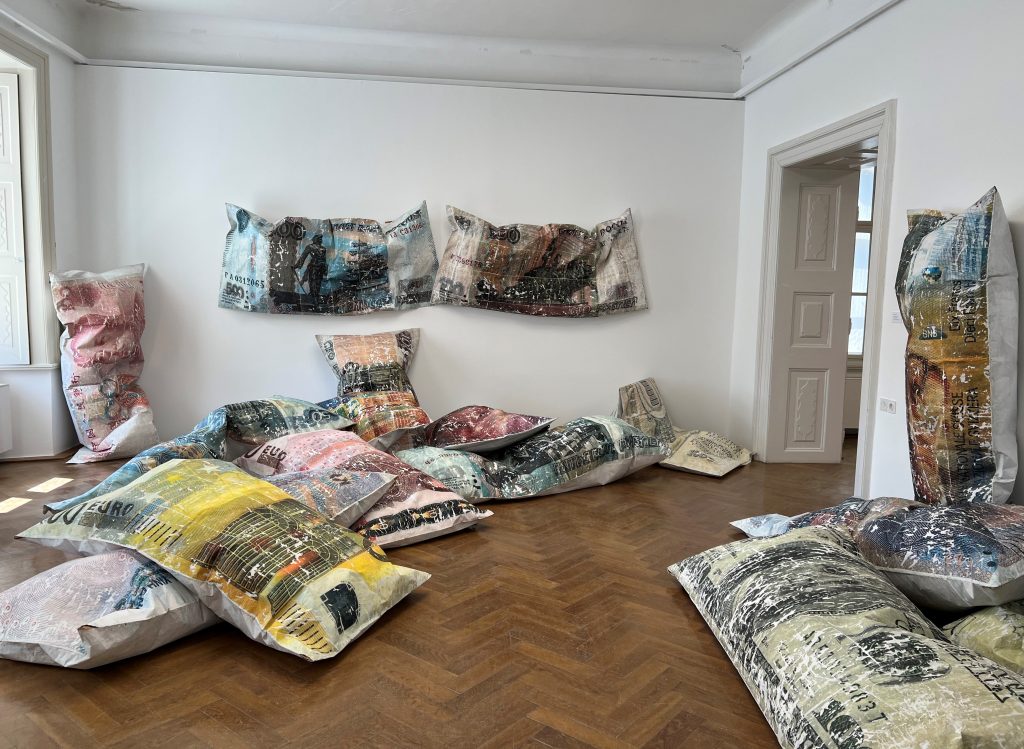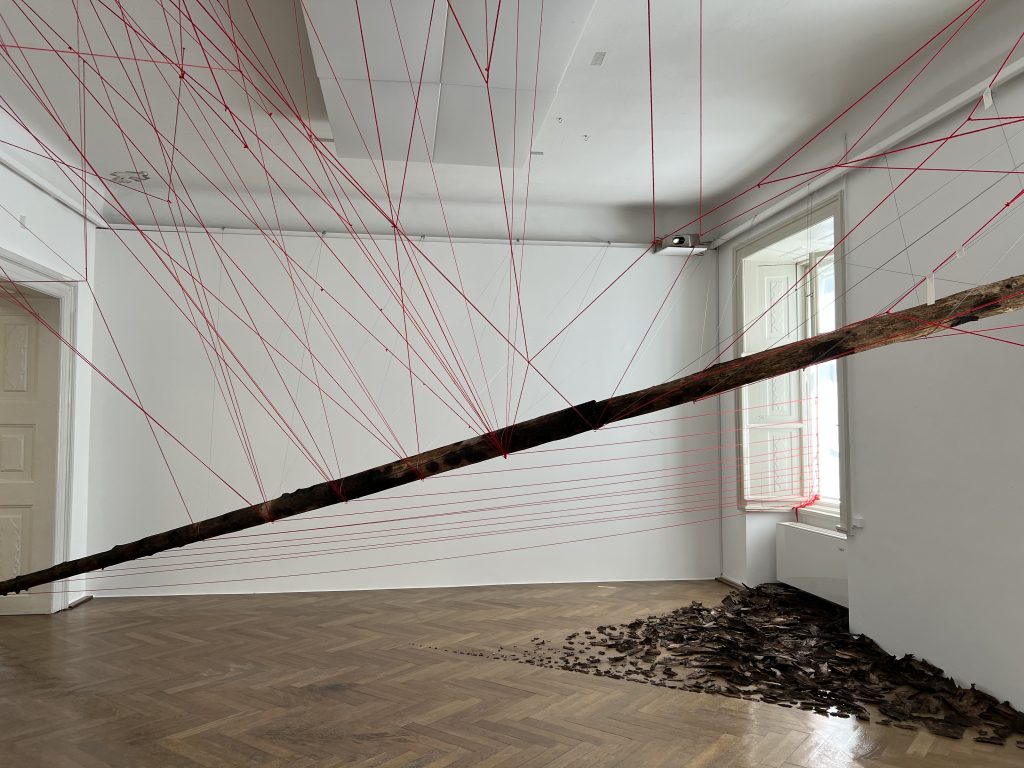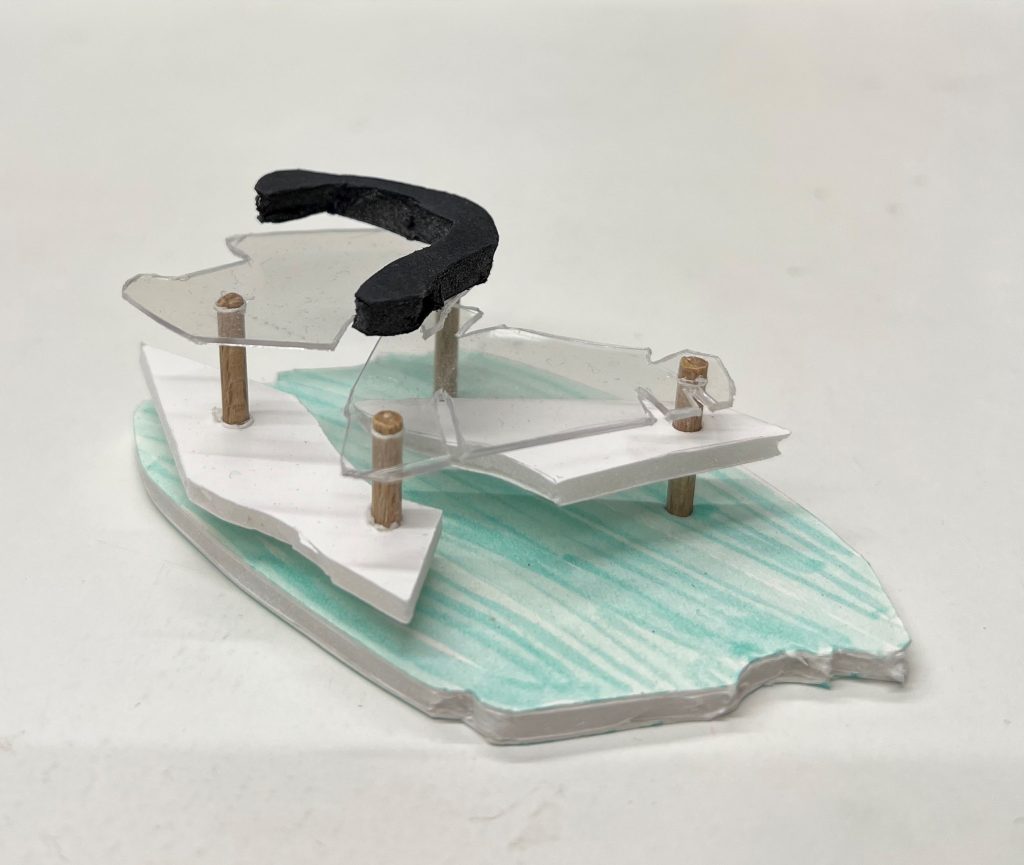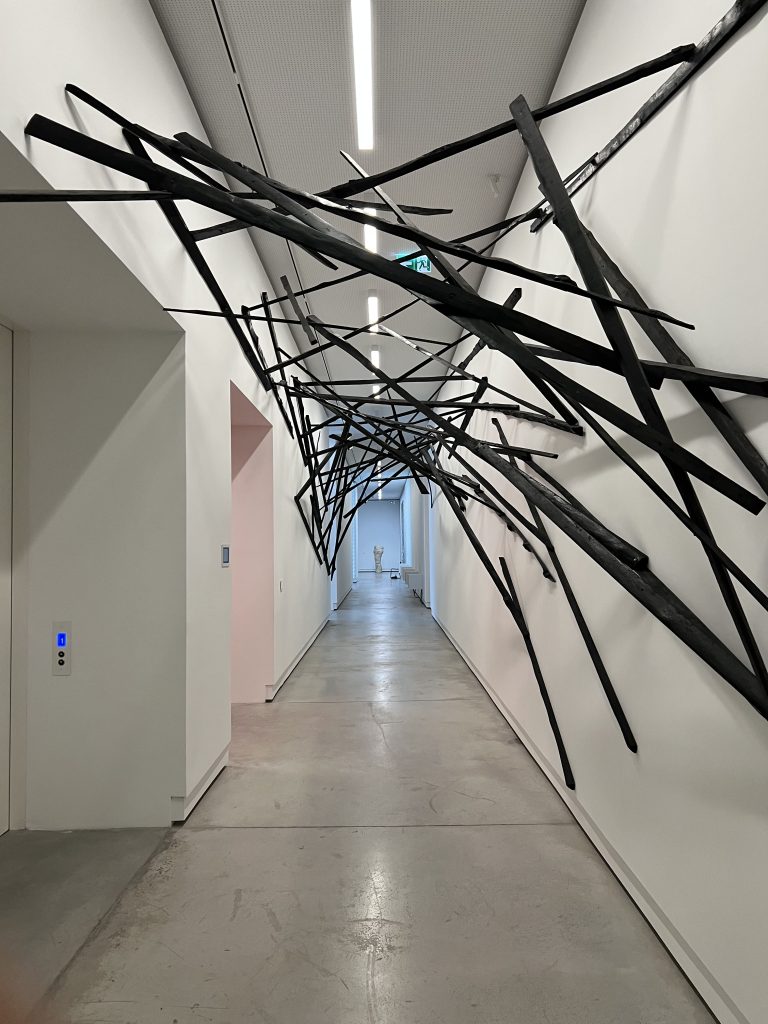Ljubljana – the City of many Bridges and Exciting Art
Hello everyone, sorry for being absent for some time. I was quite busy and am now writing this blog as I discovered a new favourite city this past July: Ljubljana.
I travelled there with my mother and a group of people that are interested in the Eastern European Art scene. It was also an opportunity for me to explore more Eastern European cities as I’m half-Romanian.

© Antonella Grevers

© Antonella Grevers
We arrived in Ljubljana, also called the city of bridges, as most of them and many buildings were constructed by the famous Slovenian architect Jože Plečnik; who not only had a major impact on Ljubljana but also on the modern architecture of Vienna and Prague. In 2021, selected places of Plečnik in Ljubljana were inscribed on the list of World Heritage Sites.
The river flowing through the city is called the Ljubljanica, explaining all the bridges.

© https://www.visitljubljana.com/de/poi/die-drei-bruecken/
We visited the Plečnik House, which was interesting as it showed the living environment of the architect and how he integrated furniture and various objects into his household that were originally meant for his other constructions. One of the many beautiful rooms was his wintergarden, which included columns and other artefacts turning it into a comfortable place. This is where he usually received his guests.

© Antonella Grevers
Another one of his rooms was his working space where he taught many of his architect students and collected items from all over the world, e.g., Egypt and Italy.

© Antonella Grevers
This was a fascinating visit as Jože Plečnik had a compelling career that led him to build many types of constructions in three different capital cities that are still relevant to this day.
We also made a stop at Photon Gallery where we saw the exhibition: Going East: A Visual Journey into the New Eastern Europe. The show displayed 47 photographers from the former Eastern Bloc countries. Each one explores the relation between their vision and the world becoming more connected – blurring the difference between local and global.

© Antonella Grevers
According to history, the Iron Curtain collapsed with the fall of the Berlin Wall in 1989. This is, however, not the case as the images the photographers captured clearly show. The Iron Curtain never ceased to exist; it just changed its nature. It is now made of culture and identity, not bricks or walls. The supposedly “disappeared world” still lives on in stories of architecture, families and through photography that captures the current Eastern European world in all its shapes and forms.
Going East is about evolution and national identity shifts. From Central Europe to remote Siberian towns, to lands and regions largely unaffected by modernity. All the photographs shown are primary sources displaying uncompromised visions and aesthetics from countries that dealt, over the past 30 years, with social issues coming from the fast transition from socialism to capitalism.

© Antonella Grevers
We also visited the International Centre of Graphic Arts that was established in 1986 to give the international Ljubljana Biennial of Graphic Arts its own place.
Founded in 1955, the Ljubljana Biennial of Graphic Arts is one of the oldest biennials in the world. With its activities, it placed Ljubljana and Slovenian art in a global context, influenced the development of many similar events around the world and created an active network for the exchange of experiences in the field of graphic arts.
The organisers also encouraged artists from other Eastern European countries to take part in the biennial as to have an interchange between them. This was difficult at the time due to the Iron Curtain, however, the biennial still exists to this day.

© Antonella Grevers
While we visited the Graphic Arts Centre the exhibition on show was: Prints and Impressions 2. The application to participate was open to Slovenian artists of all generations that actively work in the field of fine art printing and printmaking. With this exhibition, the International Centre of Graphic Arts continues its ongoing presentation of what is happening in the field of graphic arts and the art of printing, which has been intensively researched and shaped since its foundation.

© Antonella Grevers
MGLC Švicarija is the central art residency point in Ljubljana. Where international artists are invited to stay up to a month. The residency programme exists since 2017 and has a heavy focus on printmaking that indirectly supports the Ljubljana Biennale of Graphic Arts.
While there we visited a few studios. One of them was by Slovenian artist Janja Kosi, she is a painter that studied at the Academy of Fine Arts in Ljubljana, where she received her Bachelor’s Degree in 2016 and her Master’s Degree in 2020. She also spent some of her time at the Hochschule für Grafik und Buchkunst in Leipzig.
Spatial installations and the exploration of (non)space concepts as well as the relationship between man and architecture are her main focus. Janja also integrates different media into her practice.

© Antonella Grevers
The artist was very popular with the group because she works in different styles, but always stays true to spatial installations, even in her paintings.
She also had an idea of producing a little magazine for IKEA that showed different ways of working with the iconic blue and yellow colours, as you can see in the picture above. Should the company ever receive the magazine, it would be a good marketing strategy to integrate the paintings or sculptures she made into the different stores.
As I really liked her different styles of art, I bought a tiny artwork of hers as well. If you would like to know more about her and her art, here is her instagram: @janja_kosi.

© Antonella Grevers
One of the most fascinating art institutions we visited was the Cukrarna, which was originally a sugar refinery. It was built in 1828, and started small but over the following decades became the first proper sugar factory in the region and by the mid-19th century, the biggest sugar refinery in the Austro-Hungarian empire. This however all came to an end when a devastating fire broke out in 1858.

© https://www.archdaily.com/982901/cukrarna-space-for-contemporary-art-scapelab
The building opened as the Cukrarna Gallery in September 2021 and is a venue for exhibiting contemporary art and a place where thoughts can be explored and contemporary art projects of all kinds – visual, intermedia, performance, sound, music and more – can be created and presented. The main aim of the gallery’s programme is to create a new cultural hub. Working with other international and Slovenian artists to foster a long-term interaction, their fundamental mission is to fulfill the role of a truly contemporary art institution.

© Antonella Grevers

© Antonella Grevers
The last thing I want to write about is the famous Postojna Cave, a 24 km long karst cave system near southwestern Slovenia, located 49 km from Ljubljana. It is the second-longest cave system in Slovenia and the second-biggest stalactite cave in the world.
The actual size of Postojna was accidentally discovered by Luka Čeč, a cave lamplighter, in April 1818 who was working to get Postojna Cave’s Great Hall ready for the visit of the Austrian Emperor Franz I. While doing this he crossed a makeshift bridge, climbed some rocks and disappeared. After returning to his colleagues, he shouted “Here is a new world, here is paradise!”.
In 1819, the cave was officially opened to visitors and the Habsburg Archduke Ferdinand paid a visit. The world’s first railway in an underground cave was opened in Postojna Cave in 1872.

© Antonella Grevers

© Antonella Grevers
I’m usually not someone who likes going underground, but this cave blew me away! It was so amazingly beautiful, with all the stalactites and stalagmites that grow a mere millimetre a decade. The highest ones – the giants – can reach the height of more than 16 metres.
The cave also has different halls, one called the spaghetti hall, which are tiny stalactites growing from the ceilings of it. Many formations look like natural sculptures and are therefore even more captivating!

© Antonella Grevers

© Antonella Grevers
Thank you everyone for reading this blog! I hope you enjoyed it and learned a few things about the beautiful city of Ljubljana, its art scene and surrounding environment.
My next blog will be about Bucharest which I visited last month. It left a lasting impression on me!
Until next time…

-
-
1 year
Tagged #Bucharest, #contemporaryart, #museumofrecentart, #nationalhistorymuseumromania, #nationalmuseumromania